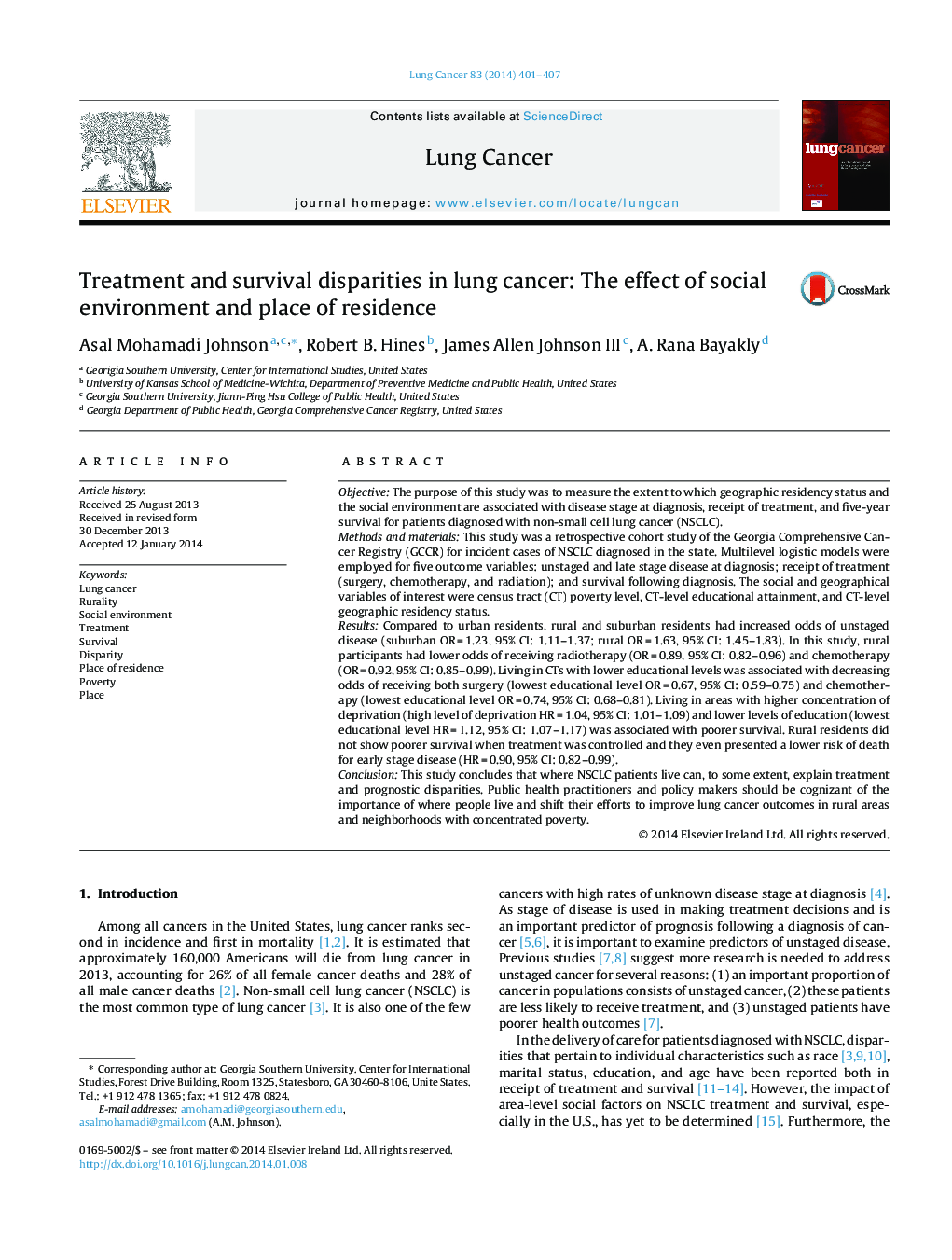| کد مقاله | کد نشریه | سال انتشار | مقاله انگلیسی | نسخه تمام متن |
|---|---|---|---|---|
| 2140939 | 1088271 | 2014 | 7 صفحه PDF | دانلود رایگان |
ObjectiveThe purpose of this study was to measure the extent to which geographic residency status and the social environment are associated with disease stage at diagnosis, receipt of treatment, and five-year survival for patients diagnosed with non-small cell lung cancer (NSCLC).Methods and materialsThis study was a retrospective cohort study of the Georgia Comprehensive Cancer Registry (GCCR) for incident cases of NSCLC diagnosed in the state. Multilevel logistic models were employed for five outcome variables: unstaged and late stage disease at diagnosis; receipt of treatment (surgery, chemotherapy, and radiation); and survival following diagnosis. The social and geographical variables of interest were census tract (CT) poverty level, CT-level educational attainment, and CT-level geographic residency status.ResultsCompared to urban residents, rural and suburban residents had increased odds of unstaged disease (suburban OR = 1.23, 95% CI: 1.11–1.37; rural OR = 1.63, 95% CI: 1.45–1.83). In this study, rural participants had lower odds of receiving radiotherapy (OR = 0.89, 95% CI: 0.82–0.96) and chemotherapy (OR = 0.92, 95% CI: 0.85–0.99). Living in CTs with lower educational levels was associated with decreasing odds of receiving both surgery (lowest educational level OR = 0.67, 95% CI: 0.59–0.75) and chemotherapy (lowest educational level OR = 0.74, 95% CI: 0.68–0.81). Living in areas with higher concentration of deprivation (high level of deprivation HR = 1.04, 95% CI: 1.01–1.09) and lower levels of education (lowest educational level HR = 1.12, 95% CI: 1.07–1.17) was associated with poorer survival. Rural residents did not show poorer survival when treatment was controlled and they even presented a lower risk of death for early stage disease (HR = 0.90, 95% CI: 0.82–0.99).ConclusionThis study concludes that where NSCLC patients live can, to some extent, explain treatment and prognostic disparities. Public health practitioners and policy makers should be cognizant of the importance of where people live and shift their efforts to improve lung cancer outcomes in rural areas and neighborhoods with concentrated poverty.
Journal: Lung Cancer - Volume 83, Issue 3, March 2014, Pages 401–407
